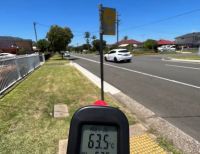There’s nothing wrong with tolls on roads. Designed well, they can both pay for roads and ensure they are used efficiently.
Without tolls, drivers considering whether or not to travel on particular roads at particular times need only consider the delays they themselves experience – those caused by the cars in front of them.
They don’t need to consider the delays they impose on the users behind them. It’s one of the reasons we have too much congestion.
Properly designed tolls that vary with distance, location and time of day can make those costs apparent and get drivers to drive in ways that minimise congestion.
But as drivers in Australia’s three largest cities of Sydney, Melbourne and Brisbane know especially well, Australia’s tolls are exceedingly poorly designed.
Sydney might or might not be the “most tolled city in the world” but many of its tolls are very high and many of the surrounding roads aren’t tolled at all. This encourages drivers to under-use toll roads and over-use suburban streets, needlessly exposing people on those streets to noise, pollution and danger.
It is also unfair to those drivers who have no choice but to use toll roads. Other drivers who can use freeways that aren’t tolled don’t have to pay.
Private ownership stops properly designed tolls
Getting a system of tolls that is well designed ought to be easy, but the existing toll road operators have long-term contracts with state governments requiring compensation if what they can charge is changed.
Private ownership of public roads has long been regarded as less than ideal, including by the father of modern economics, Adam Smith, who in 1776 argued:
















